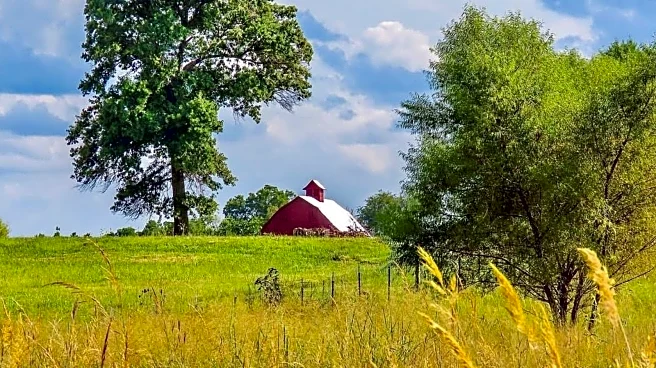
Civil War history buffs might frequent popular sites like Gettysburg and Fort Sumter, but the under-the-radar Kansas city of Pleasanton often goes overlooked by history and nature lovers alike. If you're looking for a mix of education and relaxation in the heart of the Midwest, you've come to the right place.
Located just over an hour drive south of Kansas City and about an hour and 15 minutes from Kansas City International Airport, Pleasanton is the gateway to east Kansas and everything the region
has to offer. It's a small city of 1,434 situated just off U.S. Route 69, the same route as the scenic Frontier Military Historic Byway, a crucial corridor during the war that today stretches from the Kansas-Missouri border south of Baxter Springs to Leavenworth north of Kansas City. The town name itself is a part of Civil War history; it was named after General Alfred Pleasonton who defeated Confederate forces at the Battle of Mine Creek, the largest Civil War battle fought in Kansas. The city of Pleasanton was built on and around the battlefield site and founded in 1869, just five years after the October 1864 battle and four years after the end of the war.
In addition to the antebellum and Civil War history sites around Pleasanton, there's plenty of natural beauty to absorb at the Marais des Cygnes National Wildlife Refuge, an outdoor recreation hotspot located 10 minutes north of town. Whatever you're looking for in this rural Kansas escape, chances are you'll find it here.
Read more: The Best Vacation Destinations Where The US Dollar Goes Furthest
Brush Up On Civil War History At Some Famous Sites

When it comes to Civil War history and tourism, Pleasanton likely isn't at the top of people's minds. But the unique and unsung Kansas destination boasts some hidden gems that paint a fuller picture of the antebellum and Civil War periods across the South.
Drive about five minutes south from Pleasanton and you'll reach Mine Creek Civil War Battlefield State Historic Site, a simple yet fascinating look into the one-day battle that claimed approximately 1,300 lives. When you arrive, you'll find a visitor center complete with Civil War-era artifacts like silverware and a girl's dress. Behind the visitor center is the start of the Mine Creek Battlefield Interpretive Walking Trail, a 2.6-mile journey that quite literally walks you through the bloody day. As you make your way through the prairie loop and timber loop trails, signs along the way will point out important historical sights and pieces of history.
To see another piece of mid-19th century U.S. history, drive about 15 minutes north from Pleasanton to reach the Marais des Cygnes Massacre Site, located less than a mile from the Kansas-Missouri border. The mid- to late 1850s marked the "Bleeding Kansas" period characterized by violent confrontations between pro- and anti-slavery residents as Kansas' status as a slave or free state was up in the air. It culminated in the Marais des Cygnes massacre on May 19, 1858, when about 30 so-called "border ruffians," or pro-slavery Missourians who crossed over into Kansas to intimidate and attack anti-slavery locals, ambushed 11 unarmed anti-slavery men and shot them in a nearby ravine, marked today by a sign. Five were killed and the remaining six faked their deaths.
Get In Touch With Nature At The Wildlife Refuge

After absorbing some heavy Civil War history, you might want to clear your mind at the Marais des Cygnes National Wildlife Refuge, a 7,500-acre reserve surrounding the Marais des Cygnes River. Though its name translates to "Marsh of the Swans," there's more than just swamp and wetlands here, with hardwood forests and open grasslands providing a home for creatures big and small.
Because some of the refuge is in the floodplain of the Marais des Cygnes River, the soil in the area is often replenished with nutrients whenever the river overflows. As a result, otters and wood ducks make themselves at home in and around the river. A wide range of land-roaming critters can be found here, though you might want to keep your distance, as mountain lions, coyotes, mink, and skunks are among the local residents; more docile and generally skittish inhabitants include white-tailed deer, weasels, and badgers. In the sky and nested in trees across the 7,500 acres, upwards of 110 species of birds make themselves at home while more than 300 types may pass through in a given year. If scaly creatures aren't your thing, try to avoid the more than 40 species of reptiles that live here.
While you might not think of an inland river as the ideal place to find shellfish, the refuge will prove you wrong, as approximately 30 species of mussels can be found in the Marais Des Cygnes River. The river and its banks are also home to 16 species of amphibians discovered so far.
Ready to discover more hidden gems and expert travel tips? Subscribe to our free newsletter for access to the world's best-kept travel secrets.
Read the original article on Islands.

















